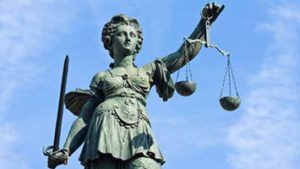 On July 22, 2021, the New Jersey Supreme Court decided the Camden County case of State v. Damian Sanchez. Justice Patterson wrote for a 5-2 majority of the Court. The principal issue involved the application of evidence rules 701 and 403 to the identification of a parole officer’s identification of a photograph allegedly depicting the defendant.
On July 22, 2021, the New Jersey Supreme Court decided the Camden County case of State v. Damian Sanchez. Justice Patterson wrote for a 5-2 majority of the Court. The principal issue involved the application of evidence rules 701 and 403 to the identification of a parole officer’s identification of a photograph allegedly depicting the defendant.
The majority held in relevant part: The Court considers the admissibility of the lay opinion testimony of defendant Damian Sanchez’s parole officer, Cheryl Annese, that defendant was the individual depicted in a photograph derived from surveillance video. In the course of a homicide investigation, the Camden County Prosecutor’s Office circulated a flyer entitled “Attempt to Locate,” which stated that a “red/burgundy” Buick Century was “possibly used” in a homicide. The flyer included a still photo derived from surveillance video. In the photograph, the driver is not seen, but the faces of a male passenger in the right front seat and a male passenger in the right back seat are visible.
In response to the flyer, Annese contacted the detective leading the investigation. She identified the front-seat passenger depicted in the photograph as defendant, a parolee whom she supervised. Annese stated that she had met with defendant at least twice a month in the fifteen months since he was released after serving a term of incarceration for aggravated manslaughter. She also told the detective that approximately a week after the homicide and robbery identified in the flyer, defendant had informed her that he had “probably dropped” his phone and had changed his telephone number. A search of a suspect’s cellphone revealed text messages exchanged with defendant.
Cases like this routinely involve video and photo enhancement. It is a costly process that magnifies the importance of having sufficient resources to build a case. The extreme advantage that the State enjoys with their tax-funded resources highlights the need for the heavy beyond a reasonable doubt burden in criminal cases. With the prosecution almost always having an extreme resource advantage, they can build a strong case with even the flimsiest evidence.
